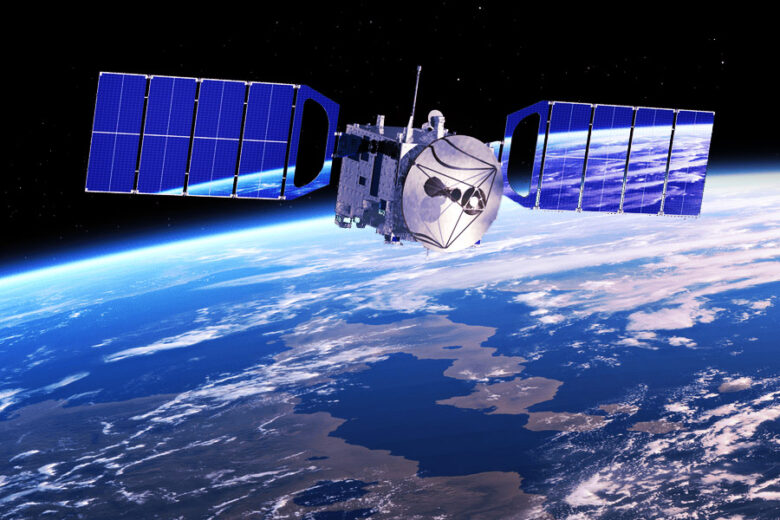Satellite communications technology has come a long way in the past few decades, evolving from a niche area to a major component of the global communications infrastructure. This change is attributed to improvements in satellite design, launch technology, and applications that have changed the way people around the world are connected. Going forward, understanding the latest changes in satellite communications technology can help us understand how it will become increasingly important in our connected world.
1. The Rise of Low-Earth Orbit (LEO) Satellites
In the past, satellites operated in higher orbits, such as geostationary orbit (GEO) and medium-Earth orbit (MEO), which gave them broad coverage but limited their latency and bandwidth. On the other hand, Low-Earth Orbit (LEO) satellites are a major revolution in satellite communications technology. LEO satellites orbit closer to the Earth, typically between 500 and 2,000 kilometers above the Earth. Because they are so close, latency is lower and data transfer speeds are faster. This solves some of the biggest problems with traditional satellite systems. SpaceX, with its Starlink constellation and OneWeb, is leading the way in building a large network of LEO satellites to bring high-speed internet access to people in remote and underserved areas around the world.
2. Advances in Satellite Miniaturization
The industry has changed a lot since satellite technology became smaller. Smaller satellites, also called CubeSats or nanosatellites, are easier to build and launch than larger satellites. These smaller satellites now allow more groups, from startups to research institutions, to access space. Modern CubeSats are very small, but they have advanced communications systems and sensors that allow them to do many things, including observing the Earth, conducting scientific research, and demonstrating new technologies. The increasing number of small satellites enables a more flexible and cost-effective satellite ecosystem.
3. Better Satellite Materials and Design
The designs and materials used to build satellites have also changed significantly over the years. Advances in materials science and engineering have made it possible to build better, more durable satellite components. For example, satellites perform better and last longer when they use lightweight composites and advanced thermal protection materials. Satellites also have longer lifespans and are more reliable thanks to improvements in energy generation and storage, such as better-performing solar panels and batteries. These design improvements help improve the performance of satellite missions and reduce costs.
4. Integrate Terrestrial and Space Networks
Another major advancement in satellite communications technology is the combination of satellite and land-based networks. In the past, satellite networks could not work with land-based communications systems, making it difficult for them to work together and keep services running. However, improvements in network integration now allow satellite and land-based networks to communicate with each other seamlessly. This integration simplifies data routing, makes the network more reliable, and expands the range of available services. It also makes it easier to use satellite technology to improve and extend the coverage of terrestrial networks, especially in rural and remote areas without extensive traditional infrastructure.
5. The Role of Software-Defined Satellites
Software-defined satellite (SDS) is a major advancement in satellite communications technology. Software-defined satellites can be modified and improved through software updates, while traditional satellites have fixed functionality. This gives operators the freedom to adapt to new requirements and improve satellite performance without making physical changes. Advanced features such as dynamic frequency allocation and adaptive beamforming can be added to satellite communications systems using SDS technology. This makes the system more efficient and usable.
6. Emergence of Mega-Constellations
Satellite communications are changing a lot because of the mega-constellation idea. These large satellite networks, usually composed of hundreds or thousands of individual satellites, are designed to cover the entire world and transmit large amounts of data quickly. The goal of the mega-constellation is to provide smooth internet access and better connectivity for multiple applications, such as broadband internet, remote sensing, and global navigation. To manage the many satellites in orbit, the formation of mega-constellations requires new launch and coordination methods and advanced satellite technology.
Conclusion
As satellite communications technology advances, the way we connect and talk to each other is changing. The number of LEO satellites is increasing, satellites are getting smaller, and satellite and ground networks are becoming interconnected. All of these changes are making satellite systems more useful and able to reach more places. Looking ahead, it is clear that satellite technology will continue to improve. This will help solve global connectivity problems and enable a wide variety of services and applications. Understanding these key changes can help you better understand how the world of satellite communications is rapidly and continually changing.
FAQs
1. What are the key benefits of Low Earth Orbit (LEO) satellites?
Low-orbit satellites offer many advantages over higher-orbit satellites, including lower latency and higher data transfer rates. LEO satellites can provide faster, more responsive communications because they orbit closer to the Earth. This is especially useful for applications that require real-time data, such as video conferencing and online gaming. LEO satellites are also ideal for delivering high-speed internet to areas that are difficult to reach or where adequate networking is not available due to a lack of traditional infrastructure.
2. How have miniaturizing satellites changed business?
Miniaturized satellites have had a huge impact on business by making access to space easier and cheaper. Smaller satellites such as CubeSats and nanosatellites are easier to build, launch, and maintain than larger satellites. This makes it possible for more groups, such as startups and research centers, to participate in space missions. Smaller satellites can do many things, from observing the Earth to scientific experiments. This makes satellite ecosystems more diverse and adaptable.
3. What are software-defined satellites (SDS), and why are they important?
Software-defined Satellites (SDS) are satellites that can be upgraded and reconfigured by updating software rather than changing their physical structure. This allows operators to change satellite functionality and improve performance to meet new demands and keep pace with changes in technology. SDS technology is an important advancement in satellite communications because it makes communications more efficient and useful by enabling adaptive beamforming, dynamic frequency allocation, and other advanced features.
4. How Does Satellite Communications Help IoT (Internet of Things)?
Satellite communications are helping the Internet of Things (IoT) by connecting IoT devices in remote and underserved areas around the world. Satellites enable IoT applications such as maritime, environmental, and agricultural monitoring to send and receive data at any time. This global connectivity is important for IoT devices that cannot connect to regular terrestrial networks. It ensures that they can always communicate reliably, no matter where they are.
5. What are mega constellations and how do they help us?
A mega constellation is a large group of satellites, often hundreds or thousands, that work together to provide high-speed data transmission and global coverage. The goal of these constellations is to provide smooth Internet access, better connectivity, and better services for multiple purposes, such as global navigation and broadband Internet. For mega-constellations to function, they require sophisticated management and coordination plans to manage the many satellites in orbit.




